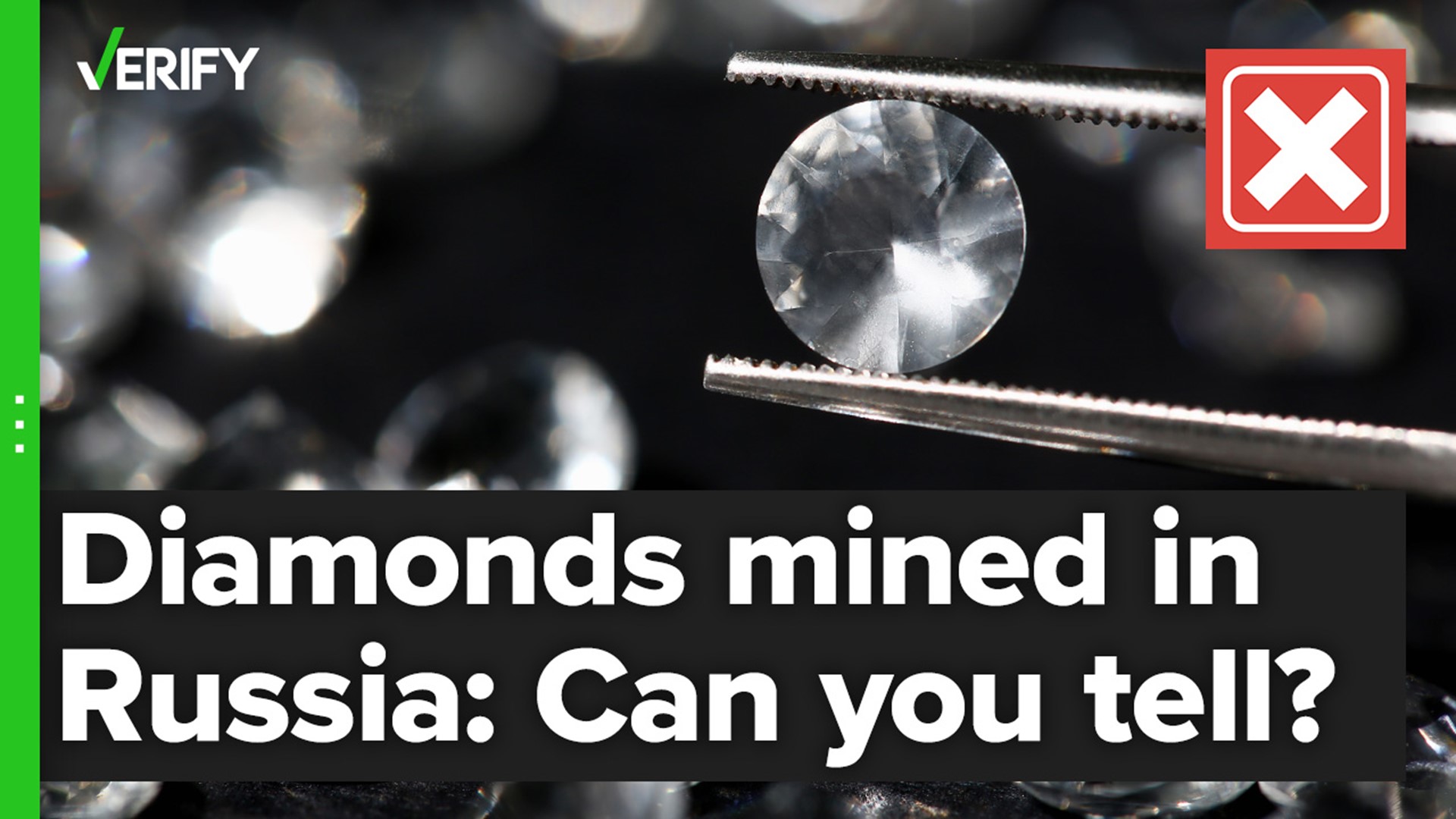Russia mines nearly a third of the world’s diamonds, according to the U.S. Department of Treasury, and Russian company Alrosa, which is the largest diamond mining company in the world, is responsible for 90 percent of Russia’s diamond mining capacity.
After Russia invaded Ukraine in February, Alrosa and its CEO, Sergey Ivanov Jr., were hit with U.S. sanctions. But there are several headlines (here, here, and here) claiming the sanctions aren’t doing much to stop Russian diamonds from appearing in U.S. jewelry stores.
THE QUESTION
Can you always tell if a diamond was mined in Russia?
THE SOURCES
- U.S. Treasury Department
- U.S. Department of Commerce
- White House
- Martin Rapaport, chairman of the Rapaport Group, and founder of the Rapaport Diamond Report and the RapNet online diamond trading network
THE ANSWER
No, you can’t always tell if a diamond was mined in Russia.
WHAT WE FOUND
President Joe Biden signed an executive order on March 11 that prohibits the import of goods from several sectors of Russia’s economy, including the country’s non-industrial diamonds, such as the diamonds people purchase in jewelry stores.
Martin Rapaport, chairman of the Rapaport Group and founder of online diamond trading network RapNet, called the executive order “ineffective” because he says “there is nothing intrinsic in the diamond itself that would tell you if it was mined in Russia.”
Rapaport told VERIFY in an email that the executive order is limited to the U.S. importation of Russian rough diamonds or diamonds polished in Russia, but he says diamonds cut or polished outside of Russia are excluded.
“The order places no restrictions on the U.S. importation of polished diamonds sourced from Russian rough diamonds but cut and polished elsewhere,” Rapaport said.
Russia mostly produces rough diamonds that need to be cut and polished, and that process is often done in other countries. This means a diamond mined in Russia could be sold to a company in another country that isn’t on the U.S. sanctions list, like China or India, and those finished diamonds could then be sold to the U.S. and labeled “made in China” or “made in India.”
This practice is perfectly legal, according to the U.S. Department of Commerce, because the diamonds underwent a “substantial transformation” – or a fundamental change in form, appearance, nature, or character, which adds to its value.
“The new sanctions used the term ‘origin’ and not ‘source.’ This seemingly minor difference has major legal implications,” Rapaport explained. “The diamonds legally lose their Russian ‘origin’ status after being ‘substantially transformed’ in the manufacturing process, usually in India, which manufactures about 92% of the world’s diamonds. This loophole essentially renders the new sanctions to be meaningless.”
Rapaport is encouraging companies who sell through the RapNet exchange to indicate a diamond’s rough source on their diamond listings. The Rapaport Group has also suspended all Russian companies from RapNet, and will no longer participate in any trading or promotional activities with Russian companies.
Signet Jewelers, the owner of Kay Jewelers and Zales, announced in a memo that the company has also halted all trade in precious metals and diamonds that originate from Russian sources. Jewelry company Brilliant Earth also posted on Twitter that it removed all Russian mined diamonds from its website on Feb. 26
More from VERIFY: No, Smirnoff and Stoli vodka are not made in Russia

